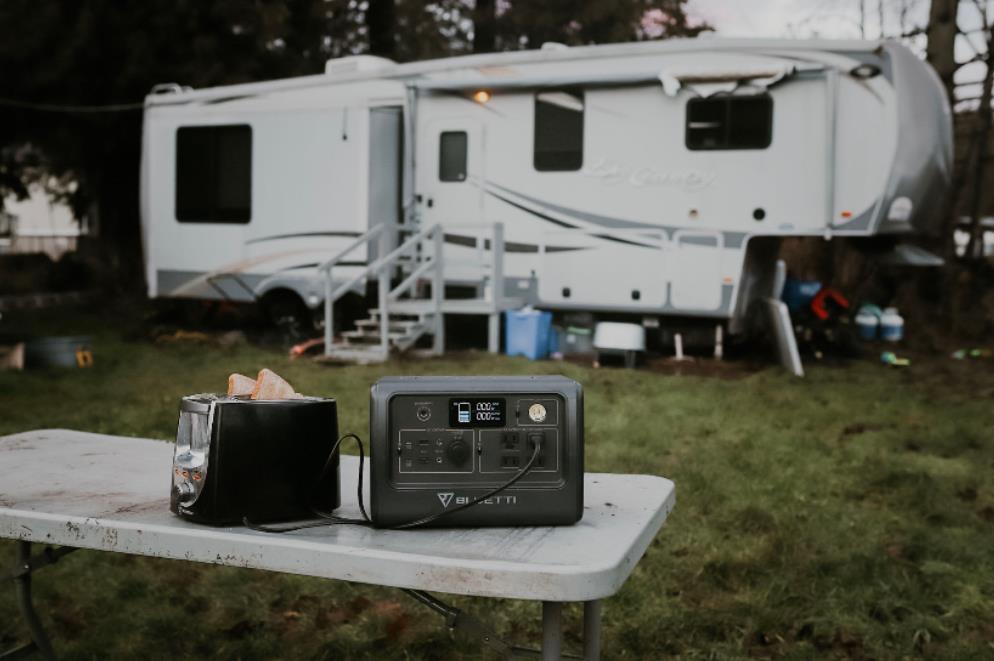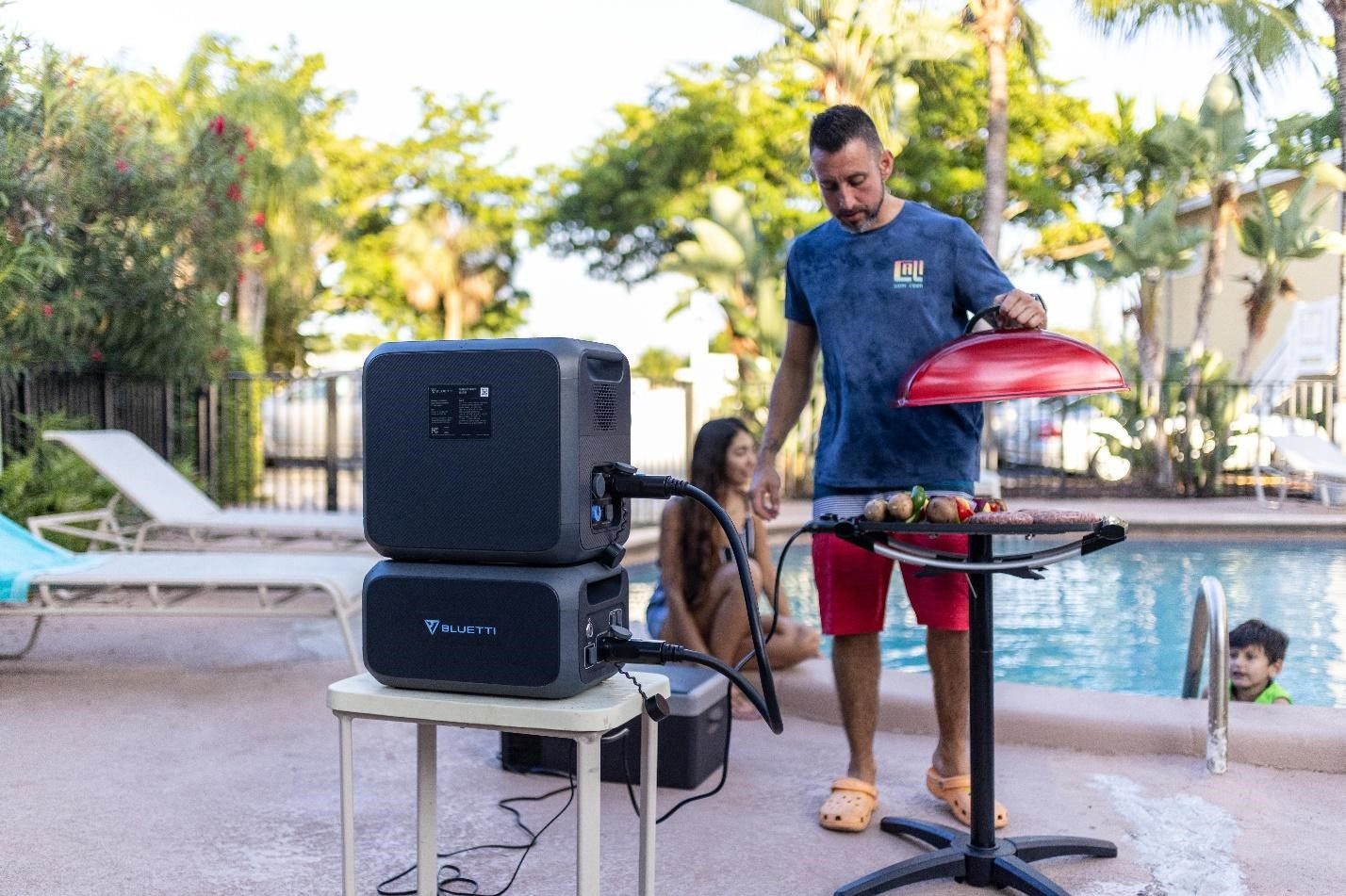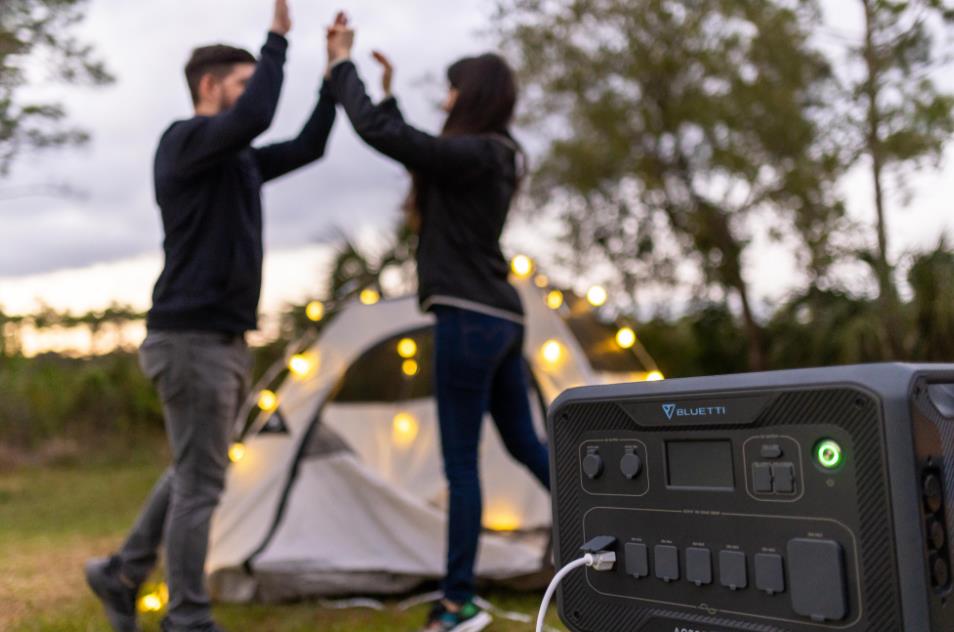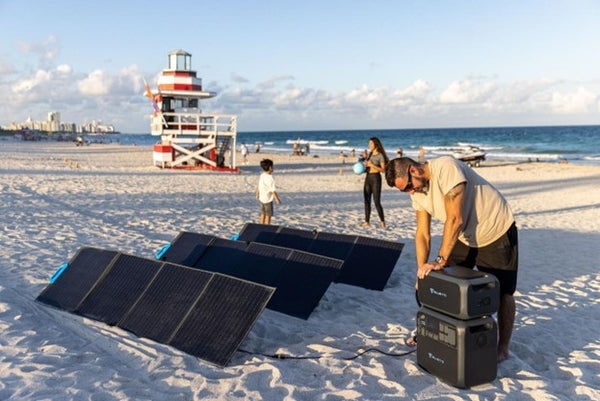Portable power stations can be thought of as the miniature and less popular cousin of generators. These versatile power banks can be found in the lunchbox- to briefcase-sized bodies and are compact enough to accompany you anywhere that you’d require a portable power source to keep your electronics charged. As such, portable power stations are the perfect companion to power your camping trips in the great Canadian wilderness.
While all power stations offer delocalized power in a travel-friendly package, each portable generator is unique in terms of design and functions. Knowing this, the best portable power stations in Canada are those that provide the greatest bang for the buck. This article will explain what is a power station, how a power station works, and how you can choose the best portable power stations in Canada. So, without further ado, let’s get started!
What Is a Portable Power Station?
Portable power stations are high-capacity battery packs in a compact and travel-friendly design. These devices come with a rechargeable battery that can power a variety of devices ranging from smartphones and laptops to air conditioners and electric grills depending on the capacity you choose.
Heavy-duty portable power stations such as those offered by Bluetti can last you many hours, maybe even days on light to moderate use, freeing you from the trouble of carrying gas with you every time you embark on an off-grid adventure. They are also equipped with multiple DC outlets, AC outlets, USB-A outlets, USB-C outlets, automobile outlets, and even wireless charging pads allowing the user to power a wide array of devices simultaneously.
Not only that, but the high-end models of portable power stations come with multiple recharging options which means that you can recharge your power station using a variety of power sources such as solar panels, gas generators, AC outlets, Lead-Acid batteries, and AC plus Solar simultaneously.
How Do Portable Power Stations Work?

The simple and compact design of portable power stations may have you believe that these devices are very straightforward, however, this couldn’t be farther from the truth. There are numerous intricate and sophisticated components working behind the curtains that allow portable power stations to function the way they do, i.e., provide you with portable and reliable energy for your gadgets and appliances.
Here are some of the primary components that make up a portable power station:
Battery
As mentioned before, portable power stations are essentially high-capacity battery packs. And so, like any normal battery, the portable power stations themselves must be charged before they can provide you with energy.
There are multiple ways to charge a power station, you can do it using solar panels, a generator, an AC outlet, or another battery. The difference, however, is the ports you’ll have to use. A generator and an AC outlet in your home would deliver AC power, therefore, when charging the station through these sources, make sure to plug them into the AC input port of the station.
On the other hand, a battery or solar panel will deliver DC power and so you must use a DC input port when charging the station using these sources. Portable power stations offered by Bluetti use a high-quality lithium-ion (LiFePO4) battery that provides you with long and reliable backup even after a thousand charge cycles. In fact, Bluetti AC200P portable power stations retain 80% of their battery health even after 3,500+ cycles.
Charge Controller
The batteries of a portable power station are also accompanied by an integrated charge controller. This device serves the purpose of regulating the current flow to and from the battery of the power station. Bluetti uses MPPT (maximum power point tracking) charge controller as well as BMS (Battery Management System) technology with its batteries. This helps protect the battery from overcharging, over-discharging, overheating, excessive voltage, and other detrimental hazards that can shorten a battery’s lifespan.
Inverter

Inverters are the vital component of a power station that allows it to work with both DC and AC energy types. Being a battery pack, a portable power station requires DC energy to charge its battery. But then how do you charge a power station using an AC outlet or a generator you wonder?
This is thanks to the inbuilt inverter in the power station that converts the AC energy input to DC before sending it to the battery for storage. However, this is not the only function that the inverter performs. Since power stations store only DC energy, they also deliver only DC energy. This raises a question: how can a power station then provide AC energy output for your appliances that only run on AC energy.
This is again thanks to the inverter that converts the outgoing DC energy to AC before it reaches the AC outlet ports. If you removed the inverter from the portable power station, this would essentially leave you with a bare battery that could only be charged through a DC power source and could power only DC appliances and electronics.
Considering that most of our electronic items and appliances operate on AC energy, a portable power station without an inverter wouldn’t be of much use to anyone. Bluetti portable power stations use only premium AC Pure Sine Wave Inverters capable of efficiently converting energy while minimizing conversion losses.
Fan
Some portable power stations, especially the high-capacity ones, also have an integrated fan that keeps the temperature of the power station in check. The smart temperature-activated fan automatically turns on when the temperature of the station begins to rise beyond a certain level. The absence of a fan can lead to overheating of the station internals which, in turn, could accelerate the degradation of the battery and other components.
Best Portable Power Stations in Canada – How to Choose
When shopping for a portable power station, you’ll find that there is an abundance of choices making it difficult for you to distinguish the worthwhile ones from the low-quality ones. Here are a few key features to help you identify the best portable power stations in Canada:
Power Rating
Generally, there are two main types of power ratings you need to look for, one is watt-hours (Wh) and the other is watts (W). watt-hours, denoted by “Wh” is essentially a measure of the capacity of the power station’s battery. A higher value means a larger battery which translates to a longer backup time.
The other rating is watts which represents the maximum power or energy output the power station can deliver at any one time. The higher the value, the greater the number of devices the station will be able to power simultaneously. A higher value also means that the station will be able to support more power-draining devices such as coffee makers, air conditioners, etc.
You can also use these ratings to determine whether or not a particular power station is enough to facilitate your energy needs.
Features
After the power ratings of a portable power station, the features that it comes with are the best way to evaluate how capable the system is. A good power station will have all the necessary features such as USB type-A ports, USB type C ports, AC wall outlets, and even a car outlet. A great power station, such as the Bluetti AC200P, will offer you some additional features in addition to this such as a wireless charging pad and an LCD that shows the remaining battery charge and various other parameters.
Having these features makes a power station all the more practical and allows you to make the most of your system. With multiple ports you can power several devices at once, the LCD can be a great way to monitor the energy levels of your system and also get an ETA on how long it will last with the current usage.
Size and Weight
Heavy-duty power stations can be as large as a microwave oven. Compared to a full-sized gas generator, this is still pretty compact, however, it might not be compact enough for you. Therefore, the size and weight of the inverter should be a key consideration when buying a portable power station.
This, however, is something that depends on the preference of the buyer and will therefore vary from person to person. As such, when looking for some of the best portable power stations in Canada, you should decide the size of station you want beforehand so you can streamline your options to those that match your size and weight requirements.
Solar Charging – Using Solar Panels to Charge Portable Power Stations

Pairing your portable power station with portable solar panels makes for one of the most reliable, versatile, and clean energy systems. When charging your power station with solar panels, you also get the added benefit of avoiding the conversion losses that occur in the inverter when converting AC energy to DC.
This is so because solar panels generate DC energy which is just what the battery needs. As a result, there is no conversion of AC energy to DC when charging with solar panels as there would be when charging the power station using a gas generator or AC electrical outlet.
Other than this, using solar panels also offers you the benefit of being a more flexible power source since sunlight is a more abundant resource compared to gas. This means that with solar panels, you’ll be able to charge your power station almost anywhere in the world without having to carry gas with you or worry about how far the next gas station is.
Not to forget, you’re saving the environment from a ton of pollution by using solar since it’s a completely emission-free energy source, one that does not harm the environment in any way. Best of all, with solar charging, you’re essentially producing and storing free energy.
How long does it take to charge a portable power station using solar panels you wonder? The simple answer is that it depends on the size of your solar array and the capacity of your power station. For instance, let us assume that you have a 2000Wh Bluetti AC200P portable power station and you’re using a 700W solar setup to charge it. Dividing the capacity of the power station by the output of your solar array, we get:
This simple calculation shows that with the system and solar array arrangement above, it would take us around 3 hours or less to fully charge the portable power station. It is worth noting that the calculation assumes 3 hours of peak sunlight in which the solar panels are operating at their optimal performance.
In light of this calculation, we can see that the larger your power station, the longer it will take to charge the system. In addition, the larger your solar PV setup the less time it will take to fully charge a portable power station.
Benefits of Using a Portable Power Station
Here are some reasons why you should consider buying a portable power station:
- Requires very little maintenance and is one of the most low-maintenance power sources available.
- Does not produce any noise.
- Pairing with portable solar panels will grant you a self-sustaining energy source that provides you free energy.
- Are safe to use since they do not produce harmful fumes or sparks as gas generators do.
- Can offer you clean, emission-free, and sustainable energy.
- They are cost-effective in the long run since you can produce free energy without any additional expenses and they require very little maintenance.
Frequently Asked Questions (FAQs)
1. Can You Run a TV Off a Portable Power Station?
There are power station options that can power a TV, and an air conditioner too in fact, such as the Bluetti AC200P.
2. What Should I Look for When Buying a Portable Power Station?
Your three main considerations when buying a power station should be:
- The power capacity
- The size and weight
- The features of the station
3. How Long Will a Portable Power Station Last?
There is no one answer to this question since the backup time largely relies on the appliances and electronic devices you’re powering via the power station as well as the capacity of the power station. A high-capacity power station will easily last you several hours on moderate use.
4. What Can You Use a Portable Power Station For?
You can use a portable power station on your camping trip, to power your RV or off-grid cabin, or you could even use the system at your home during a power outage.
Final Thoughts
With this comprehensive guide on portable power stations and solar charging, you will be well aware of what a portable power station is as well as how to find the best portable power stations in Canada. It is worth knowing that the size, weight, and even design are factors that depend on buyer preferences and therefore, your preferred portable power station may not be what the masses deem to be the best. As long as the system works for you, that’s all that counts.



